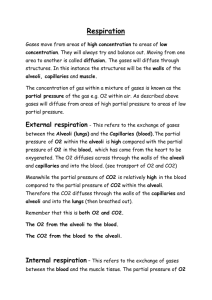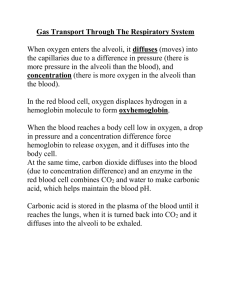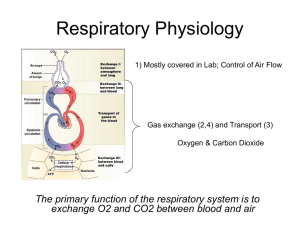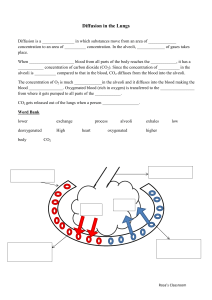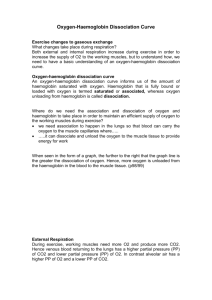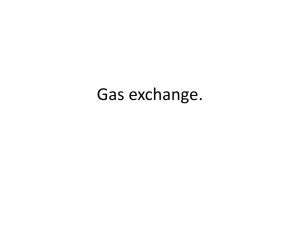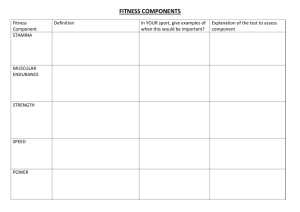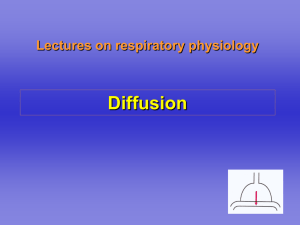Internal and external respiration during exercise
advertisement
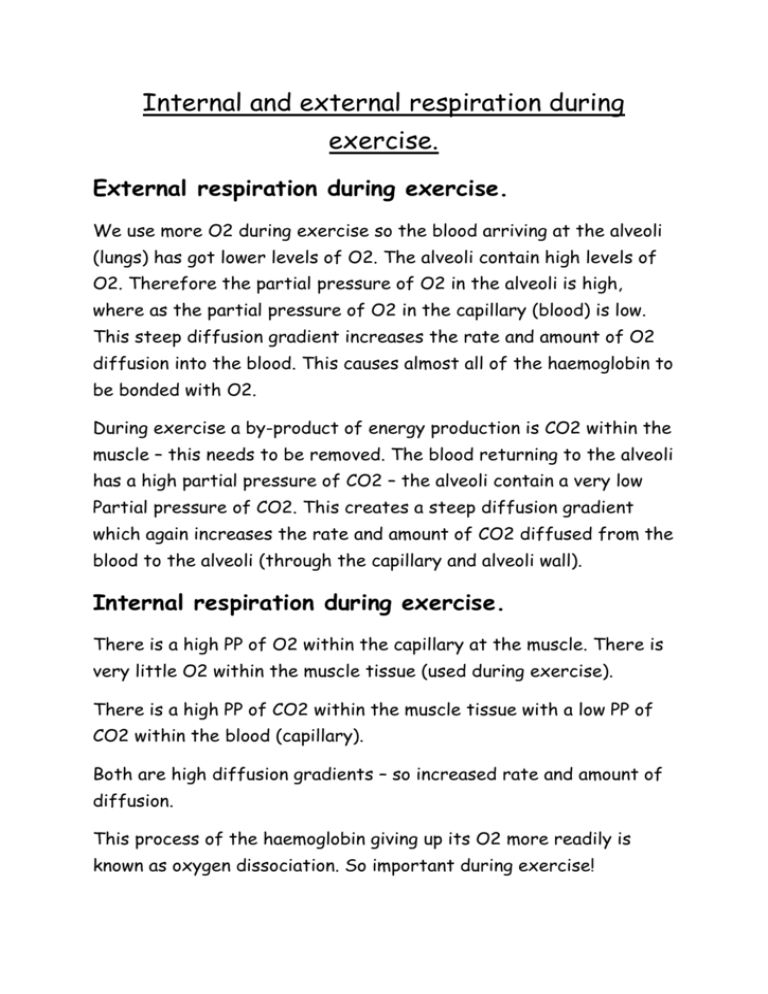
Internal and external respiration during exercise. External respiration during exercise. We use more O2 during exercise so the blood arriving at the alveoli (lungs) has got lower levels of O2. The alveoli contain high levels of O2. Therefore the partial pressure of O2 in the alveoli is high, where as the partial pressure of O2 in the capillary (blood) is low. This steep diffusion gradient increases the rate and amount of O2 diffusion into the blood. This causes almost all of the haemoglobin to be bonded with O2. During exercise a by-product of energy production is CO2 within the muscle – this needs to be removed. The blood returning to the alveoli has a high partial pressure of CO2 – the alveoli contain a very low Partial pressure of CO2. This creates a steep diffusion gradient which again increases the rate and amount of CO2 diffused from the blood to the alveoli (through the capillary and alveoli wall). Internal respiration during exercise. There is a high PP of O2 within the capillary at the muscle. There is very little O2 within the muscle tissue (used during exercise). There is a high PP of CO2 within the muscle tissue with a low PP of CO2 within the blood (capillary). Both are high diffusion gradients – so increased rate and amount of diffusion. This process of the haemoglobin giving up its O2 more readily is known as oxygen dissociation. So important during exercise! There are four factors which help this process: 1 Increase blood temperature. Heat generated when exercising. 2 Decrease in PP of O2 within muscle increasing O2 diffusion gradient. O2 used up through energy production during exercise. 3 Increase in PP of CO2 increases O2 diffusion. CO2 produced as a by-product of energy production. 4 Increase in acidity (lower PH). Production of lactic acid lowers PH. The affect of the haemoglobin giving up the O2 more readily increases the O2 supply to the working muscles which delays fatigue /allows for higher intensity work / allows work for longer duration. Diagram below shows the O2 dissociation curve. See p44 in revision guide or p108-9 in textbook.
